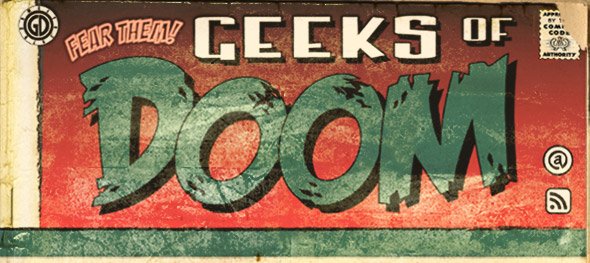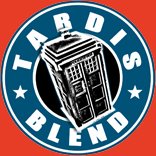
Alien 3. David Fincher’s 1992 film takes place right after the events of Aliens. An escape pod from the USS Sulaco crash-lands on a prison-run refinery planet, killing everyone aboard except Lieutenant Ellen Ripley (Sigourney Weaver). Unknown to Ripley, an alien organism was also aboard, which then begins killing the inhabitants of the prison.
Upon release, Alien 3 received mixed reviews and Fincher disowned the film after the studio dismantled and reworked it without his consent. An alternate version of Alien 3 (officially titled the “Assembly Cut”) with over 30 minutes of additional footage and alternate key plot elements was released on the Alien Quadrilogy DVD set in 2003, and later in the Alien Anthology Blu-ray set in 2010.
Titan Books recently reissued Alan Dean Foster’s Alien 3: The Official Movie Novelization, as well as his adaptations of Alien and Aliens. After re-reading Foster’s novel, I thought it would be fun to explore some of the differences between the book and the film and how unused elements from the screenplay were recycled for subsequent Alien films and Ridley Scott’s 2012 prequel, Prometheus.
Continue below for 15 Things You Didn’t Know About Alien 3: The Official Movie Novelization, and be sure to check out 15 things about the Alien and Aliens novelizations if you missed them.
Originally, Foster wanted his adaptation to differ from the film’s script, which he disliked, but the producers rejected all of the material he planned to include. According to Foster, “Out went my carefully constructed motivations for all the principal prisoners, my preserving the life of Newt (her killing in the film is an obscenity), and much else.” As a result of the experience, Foster later turned down the opportunity to write the novelization of Alien Resurrection.
Overall, Foster’s novel follows the plot of the Assembly Cut. Alternate scenes include Clemens walking alone on the beach and witnessing the EEV crash, the use of oxen to recover the downed pod and one of them subsequently being host for the Alien (instead of a dog), the prisoners successfully trapping the Xenomorph in a waste storage tank, and a deranged Golic later releasing the creature.
15) Foster’s novel explains why it is necessary to completely evacuate the USS Sulaco, and why the EEV crashes so catastrophically on Fiorina “Fury” 161. As the Facehugger attempts to pry Newt’s cryotube open, it is impaled by a shard of breaking glass, causing its blood to spill and start an electrical fire. What’s most interesting is that this Facehugger dies, suggesting there must be a second organism on board. The damage to the EEV containing Ripley, Newt, and Hicks causes it to crash into the sea at high speed when it attempts to set down on Fiorina 161.
14) The planet is known as Fiorina “Fury” 361 in the novel, not 161 as in the film. Instead of an enormous prison complex, the facility is an abandoned ore mining colony. Weyland-Yutani intends to reopen the mine but is leasing the deserted complex to the prison system until the market improves. The prisoners double as custodians who look after the facility until it reopens. In the novel, these inmates are still actively serving sentences. In the film, it’s explained that they stayed on planet of their own free will after the prison was shut down.
13) While she is unconscious in the prison’s medical bay, Ripley has a nightmare about being stalked through the Sulaco’s hypersleep chamber by a Xenomorph. The organism grabs her from behind and pins her to the top of Hicks’ cryotube. The Xenomorph rapes Ripley as the Corporal grins at her through the glass – a horrifying sequence that may allude to what the Alien did to Lambert in Ridley Scott’s 1979 film – or at least what Ripley’s subconscious thinks it did.
12) While Aaron still has a low IQ (85) and serves as Warden Andrews’ assistant in the early part of the story, once he takes command Aaron becomes more like Burke from Aliens. He helps Ripley hunt the “Dragon,” and schemes to use the Xenomorph’s capture to get promoted off Fiorina.
11) When questioned about the need to perform an autopsy on Newt, Ripley makes up a story about the mission to Acheron (LV-426). Ripley explains that the Company was researching deadly diseases and viruses on the planet and that the USCM had to nuke the site to contain an outbreak. Ripley suggests that, as a result of the disease research, Newt may have contracted cholera.
10) As in the Assembly Cut, Frank and Murphy find the corpse of a Facehugger alongside Babe, the dead ox that acts as host to the Runner. In the film, you can clearly tell that this is a much larger Facehugger than we’ve seen before. It’s implied that this is a Royal Facehugger, capable of implanting more than one embryo (including a Queen) into multiple hosts before it dies. In the novel, however, it’s never made clear if it is different, or just a regular ol’ Facehugger.
9) Boggs, Rains, and Golic are searching for provisions when they are attacked by the Dragon. They venture into the abandoned mine shafts, and the candles they light are “breadcrumbs” to help them find their way back to the main complex. In the film, it’s suggested that they’re mapping an abandoned part of the facility.
8) Dillon and the others consider the Dragon to be a herald of the apocalypse and welcome its appearance. This is hinted at in the Assembly Cut, but not all of the inmates share this religious belief.
7) Ripley observes that the Dragon is bigger than the Xenomorphs she has seen previously, and also has different legs. This of course is referencing the fact that the Alien gestated inside an Ox, a much larger host that allowed the organism to grow larger and take on traits of the four-legged creature.
6) Ripley refers to the scene in the novelization (and Director’s Cut) of Alien where she finds Dallas and Brett cocooned by the Alien. She theorizes that although the Xenomorph can evidently reproduce without a Queen via “Eggmorphing,” it may not be able to create a Queen in that manner, hence the need for the Queen embryo inside her. The book specifically confirms that both forms of Xenomorph reproduction (Eggs laid by a Queen, and Eggs created from captured victims) are typical of the species. Either can be used to create more Xenomorphs, dependent on the situation. To date, this is the only official source that attempts to reconcile the two methods.
5) After Andrews’ death, Ripley, Aaron, and Dillon go looking for the creature in the ventilation ducts. They discover a discarded adult skin, indicating the Xenomorph is still growing (something that Ripley again suggests is unusual). It’s during this search that they find the toxic waste tank and come up with the plan to trap the Dragon in it.
4) In the novel, the Queen gestates in Ripley’s uterus. Ripley suggests that this is because it requires more space than a typical Chestburster.
3) The finale of the film is slightly different. Dillon successfully escapes the mold with Ripley, and prepares to break her neck as part of his promise to kill her, but finds he cannot bring himself to do it. At that moment, the Xenomorph emerges from the lead and drags Dillon back into the molten metal, killing him. Personally, I prefer Dillon’s death in the film, where he goes out like a complete bad-ass by challenging the Xenomorph to a fistfight.
2) As he is trying to convince Ripley to come with him, Bishop II claims Carter Burke was a rogue agent during the events of Aliens, and not a representative of the company’s interests. When Aaron hits Bishop II with a lead pipe, Foster describes the impact as “spongy.” “Real blood poured from Bishop II’s cracked skull.” Earlier drafts of the script also indicate that Bishop II is the human creator of the Bishop android. “No wires. No milk. Real blood.”
1) The novel clears up how Ripley’s signing off message from the end of Alien can be heard coming from the EEV, when there is no reasonable way a recording of it could be stored on the pod; the radio message is instead lingering in space, and is picked up by the radio equipment on board the EEV.
Published by Titan Books, Alien: The Official Movie Novelization, Aliens: The Official Movie Novelization and Alien 3: The Official Movie Novelization are currently available online and in stores.






No Comments »
No comments yet.
RSS feed for comments on this post. TrackBack URL
Leave a comment